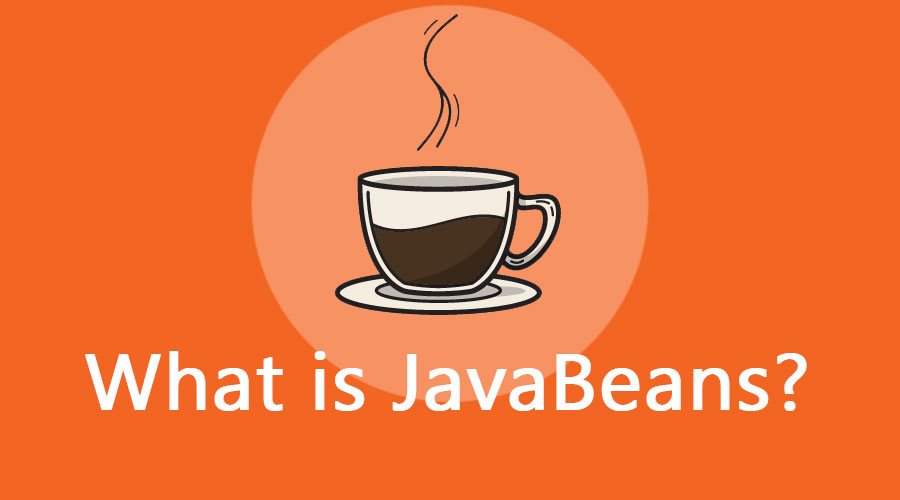Updated June 8, 2023

Introduction to JavaBeans
JavaBeans is a reusable class code element often applied on java based software application programming. Here, Beans can be defined as encompassing multiple objects beneath a single object. The JavaBeans class components are methods, events, properties, and persistence. This class type is advantageous due to its notable reusability characteristics, enables object communication, is platform-independent, has shorter time consumption, requires lesser manual efforts, etc.
Understanding JavaBeans
As stated, JavaBeans helps in reusing software components in developing an application. With the help of JavaBeans, one can reuse software components that other developers write. This eliminates the need for understanding the inner workings. As Beans consist of numerous objects in a single object, one can directly access this object from various places. Its maintenance is easy. The software component model deals with creating and reusing the software components to build an application. With the help of the builder tool, one can develop new beans or use existing beans to create an application. One can directly use these beans in the software.
If you are still confused, consider the example of a worker assembling a car; the radio is one of the components. Instead of manufacturing the radio from scratch, a worker can directly assemble the radio in the car. This eliminates the need for manufacturing a radio for assembly.
Components of JavaBeans
Components of Java Beams are nothing but the class that contains the definition of beans. These classes have specific design conventions. It consists of events, methods, persistence, and properties. Non-GUI-based and GUI-based components are the two types of components.
The classes are discussed below:
- Properties: This attribute consists of a label, font, color, size, display size, etc. It determines behavior, appearance, and the state of Beam.
- Methods: Methods in JavaBeans are similar to the normal Java methods. It does have any specific naming convention.
- Events: Events in JavaBeans is similar to Swing event handling.
- Persistence: It helps in storing the state of JavaBean.
What Can You do with JavaBeans?
As there are no restrictions on the capabilities of JavaBeans, one can design any component in this. With JavaBeans, one can reuse software components in any environment. From simple functions like spelling correction to complex functions like forecasting the stock market, beans can perform different functions. Beans can be visible or invisible to the end user. With a set of distributed components, beans can work autonomously. From set data points, the software can generate a pie chart. This is an example of a locally executed bean. Bean, which delivers real-time price information about the stock market, is also one of the examples of this.
Beans can also be used to give interactive capabilities to web-based applications. Beans can run on any operating system. It can run inside numerous application environments such as word processors, browsers, and many other applications. A UI component such as trees, graphical buttons, and trees gives a lively touch to applications and eliminates the need to write custom components. One can develop the JavaBeans with Beans Development Kit (BDK) from Sun.
Advantages of JavaBeans
- Run anywhere; write once – Java Beans eliminates the need for writing software repeatedly.
- One can work with JavaBeans on Numerous local platforms, which makes it valuable in the global market.
- JavaBeans can capture the events that are sent by other objects. It enables object communication.
- An application developer can control Methods, events, and the properties of any Java beans.
- Zero hassle at run time with auxiliary software; one can configure beans during design time.
- Reusable: One can make a persistence configuration setting in JavaBeans. Persistent storage and restoration later can save the configuration setting of the bean.
Required Skills for JavaBeans
- It is vital to understand computer fundamentals, algorithms, structure, etc, properly. One should have an understanding of the numerous operating systems of the computer.
- One must have a proper understanding of the Java 1.1 event model. One should be aware of different Java technologies.
- While developing operation names in the Java Bean class, following certain naming conventions is essential.
- One should be aware of the information on the builder tools to develop JavaBeans.
- The basic knowledge of different frameworks and fluency coding will surely give one edge in developing JavaBeans.
Career Scope in this Technology
In today’s interconnected world, programming language plays a pivotal role in business. Java is considered one of the most reliable programming languages in the world. It is a prevalent language among developers. The scope and carriers in developing JavaBeans will rise in the coming years. Professionals with Java skills have a lot of opportunities in these sectors. Today Java is the leading programming language in the back-end market and application development. The future looks promising for all Java professionals across the globe. Millions of Java Developers prefer Java for its usability, practicality, compatibility, and ease of use.
There is plenty of Java opportunities present across the globe. Numerous reputed companies like Microsoft, Amazon web services, IBM, Oracle, and others always seek Java professionals.
JavaBean Professionals can make a flourishing carrier in Information Technology. Everyone has different reasons for picking up different technology, but knowing JavaBeans benefits one’s skill set and offers many growth opportunities and money.
Conclusion
This post gives information about JavaBean, its process flow, uses, and advantages. This technology helps build flexible Java applications. Most of the New Java Development tools support JavaBeans. With technologies like relational databases and ActiveX, JavaBeans can be used in tandem. To summarize, JavaBean is a component architecture for Sun’s Java Language. JavaBean enables Java professionals to write applications easily and quickly. One can write any component as a JavaBean and then plugged into it into an application.
Recommended Articles
This is a guide to What is JavaBeans? Here we discuss the concept, understanding, components, advantages, required skills, and scope of JavaBeans Technology. You can also go through our other suggested articles to learn more-

